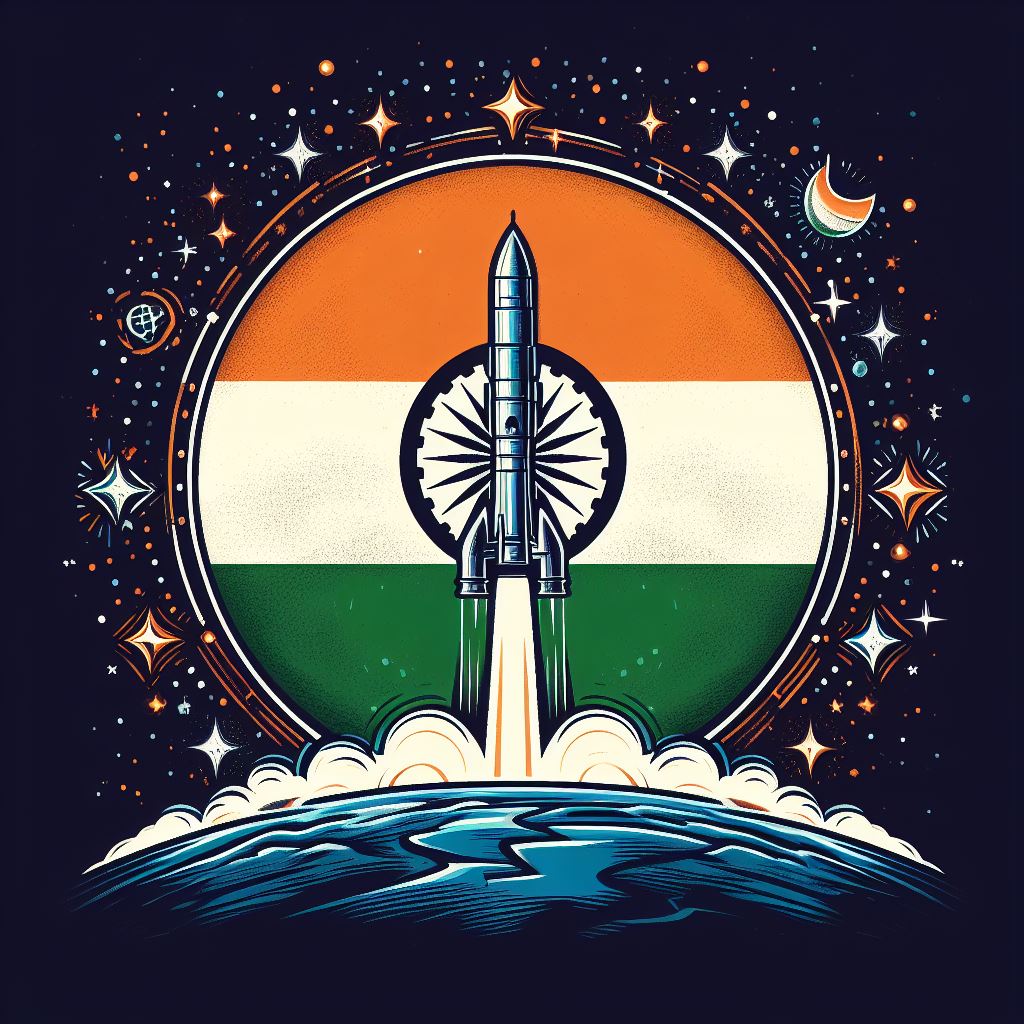India is one of the leading nations in the field of space exploration and applications. The Indian space program has a long and rich history that spans over six decades, from the early days of rocketry to the recent missions to the Moon and Mars. The Indian space program has not only demonstrated its scientific and technological prowess, but also contributed to the socio-economic development of the country and the world.
The Beginnings of the Indian Space Program

The Indian space program began in 1962 with the establishment of the Indian National Committee for Space Research (INCOSPAR) under the leadership of Vikram Sarabhai, who is widely regarded as the father of the Indian space program. Sarabhai envisioned that “there is no task, no problem, no vision more important than arousing the intellectual potential of our people and creating conditions for their creative participation in our nation’s life”. He believed that space technology could be used for peaceful purposes and for the benefit of humanity.
The INCOSPAR was responsible for initiating and coordinating space research activities in India. It also established the Thumba Equatorial Rocket Launching Station (TERLS) near Thiruvananthapuram, Kerala, which became the first operational rocket launching site in India. The TERLS was used to launch sounding rockets for atmospheric studies and scientific experiments.
In 1969, the Indian Space Research Organisation (ISRO) was set up as the main agency for developing and executing space activities in India. ISRO’s chairman is also the chairman of the Indian government’s Space Commission and the secretary of the Department of Space. ISRO’s vision is to “harness space technology for national development while pursuing space science research and planetary exploration”.
The Development of Satellites and Launch Vehicles
In 1972, India launched its first satellite, Aryabhata, using a Soviet rocket. Since then, India has launched more than 100 satellites for various purposes, such as communication, remote sensing, navigation, meteorology, and astronomy . Some of the notable satellites launched by India are:
- INSAT series: A constellation of multipurpose geostationary satellites for communication, broadcasting, meteorology, and disaster management.
- IRS series: A constellation of remote sensing satellites for earth observation, resource mapping, environmental monitoring, and disaster management.
- IRNSS series: A constellation of navigation satellites for providing accurate position information to users in India and its vicinity.
- GSAT series: A constellation of communication satellites for providing various services such as tele-education, tele-medicine, tele-conferencing, rural connectivity, etc…
- ASTROSAT: India’s first dedicated multi-wavelength space observatory for studying celestial objects and phenomena.
India has also developed its own launch vehicles, such as the Satellite Launch Vehicle (SLV), the Augmented Satellite Launch Vehicle (ASLV), the Polar Satellite Launch Vehicle (PSLV), and the Geosynchronous Satellite Launch Vehicle (GSLV). The PSLV is capable of launching multiple satellites into different orbits in a single mission. The GSLV can launch heavier satellites into geostationary orbit. India has also developed an indigenous cryogenic engine for the GSLV.
The Exploration of Outer Space
India has also embarked on ambitious extraterrestrial exploration missions, such as the Chandrayaan-1 and Chandrayaan-2 lunar missions, the Mars Orbiter Mission (MOM), and the Aditya-L1 solar mission.
- Chandrayaan-1: India’s first lunar mission launched in 2008. It carried 11 scientific instruments from India and other countries. It orbited around the Moon for about a year and performed various experiments. It also released an impactor that crashed on the lunar surface and confirmed the presence of water molecules on the Moon.
- Chandrayaan-2: India’s second lunar mission launched in 2019. It consisted of an orbiter, a lander, and a rover. The orbiter is still functioning and providing data on the lunar environment. The lander and rover were supposed to soft-land on the lunar south pole region but lost contact during the descent phase. However, they achieved 95% of their objectives.
- Mars Orbiter Mission (MOM): India’s first interplanetary mission launched in 2013. It placed a spacecraft in orbit around Mars on its first attempt. It carried five scientific instruments to study various aspects of Mars such as its atmosphere, surface features, mineralogy, etc. It also captured stunning images of Mars and its moons.
- Aditya-L1: India’s first solar mission planned to be launched in 2022. It will place a spacecraft in a halo orbit around the Sun-Earth Lagrangian point 1 (L1), which is about 1.5 million km from the Earth. It will carry seven scientific instruments to study the Sun’s corona, solar wind, magnetic field, etc…
The Future of the Indian Space Program
India has also initiated its Human Spaceflight Programme (HSP) with the aim of sending humans to low Earth orbit by 2022. The HSP involves developing a crewed spacecraft called Gaganyaan, an astronaut training centre, and a space station. India has also announced its plans to launch missions to Venus, asteroids, and Jupiter in the future.
India’s space program has many applications for socio-economic development, such as telecommunication, broadcasting, education, disaster management, agriculture, health, and so on. It also fosters international cooperation and collaboration in space activities. India is a member of various space-related organizations and forums, such as the United Nations Committee on the Peaceful Uses of Outer Space (UNCOPUOS), the International Space Station (ISS) program, the Inter-Agency Space Debris Coordination Committee (IADC), the International Charter on Space and Major Disasters, etc…
India’s space program is a testament to its scientific and technological capabilities, as well as its aspirations and vision for the future. It is a source of pride and inspiration for the nation and the world. As Sarabhai said, “We must be second to none in the application of advanced technologies to the real problems of man and society”.











Add Comment